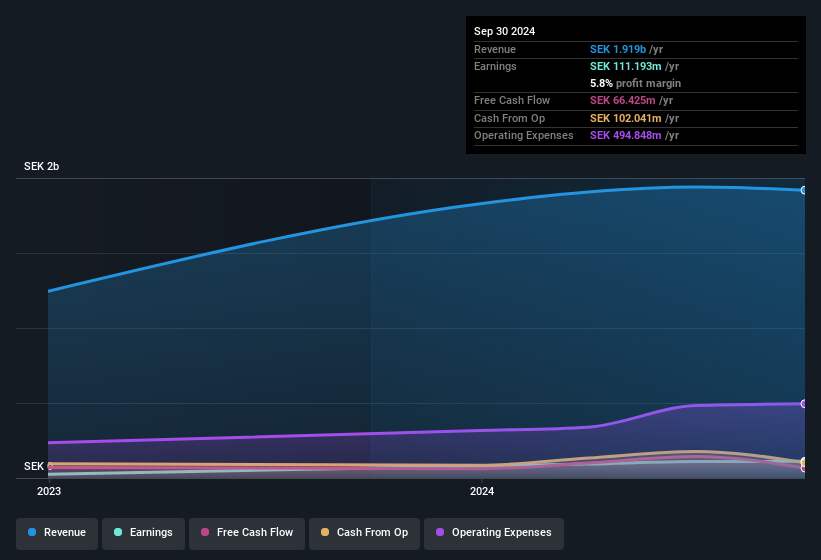Nordrest Holding's (STO:NREST) Promising Earnings May Rest On Soft Foundations
Despite posting some strong earnings, the market for Nordrest Holding AB (publ)'s (STO:NREST) stock hasn't moved much. Our analysis suggests that shareholders have noticed something concerning in the numbers.

A Closer Look At Nordrest Holding's Earnings
In high finance, the key ratio used to measure how well a company converts reported profits into free cash flow (FCF) is the accrual ratio (from cashflow). To get the accrual ratio we first subtract FCF from profit for a period, and then divide that number by the average operating assets for the period. You could think of the accrual ratio from cashflow as the 'non-FCF profit ratio'.
That means a negative accrual ratio is a good thing, because it shows that the company is bringing in more free cash flow than its profit would suggest. While it's not a problem to have a positive accrual ratio, indicating a certain level of non-cash profits, a high accrual ratio is arguably a bad thing, because it indicates paper profits are not matched by cash flow. That's because some academic studies have suggested that high accruals ratios tend to lead to lower profit or less profit growth.
Nordrest Holding has an accrual ratio of 0.98 for the year to September 2024. That means it didn't generate anywhere near enough free cash flow to match its profit. Statistically speaking, that's a real negative for future earnings. To wit, it produced free cash flow of kr66m during the period, falling well short of its reported profit of kr111.2m. We note, however, that Nordrest Holding grew its free cash flow over the last year.
That might leave you wondering what analysts are forecasting in terms of future profitability. Luckily, you can click here to see an interactive graph depicting future profitability, based on their estimates.

Our Take On Nordrest Holding's Profit Performance
As we discussed above, we think Nordrest Holding's earnings were not supported by free cash flow, which might concern some investors. As a result, we think it may well be the case that Nordrest Holding's underlying earnings power is lower than its statutory profit. Of course, we've only just scratched the surface when it comes to analysing its earnings; one could also consider margins, forecast growth, and return on investment, among other factors. So while earnings quality is important, it's equally important to consider the risks facing Nordrest Holding at this point in time. For example, we've discovered 1 warning sign that you should run your eye over to get a better picture of Nordrest Holding.
Today we've zoomed in on a single data point to better understand the nature of Nordrest Holding's profit. But there are plenty of other ways to inform your opinion of a company. For example, many people consider a high return on equity as an indication of favorable business economics, while others like to 'follow the money' and search out stocks that insiders are buying. While it might take a little research on your behalf, you may find this free collection of companies boasting high return on equity, or this list of stocks with significant insider holdings to be useful.
Have feedback on this article? Concerned about the content? Get in touch with us directly. Alternatively, email editorial-team (at) simplywallst.com.
This article by Simply Wall St is general in nature. We provide commentary based on historical data and analyst forecasts only using an unbiased methodology and our articles are not intended to be financial advice. It does not constitute a recommendation to buy or sell any stock, and does not take account of your objectives, or your financial situation. We aim to bring you long-term focused analysis driven by fundamental data. Note that our analysis may not factor in the latest price-sensitive company announcements or qualitative material. Simply Wall St has no position in any stocks mentioned.
 Wall Street Journal
Wall Street Journal